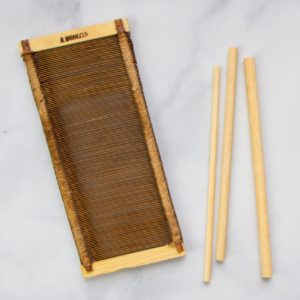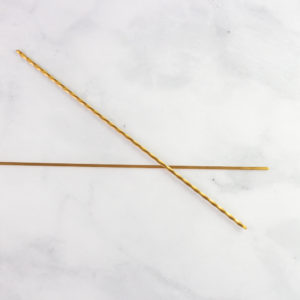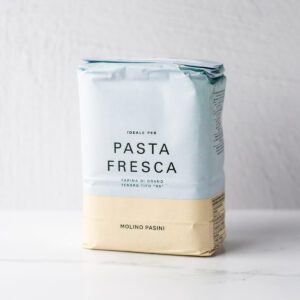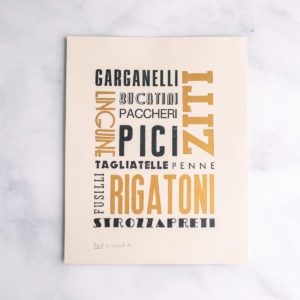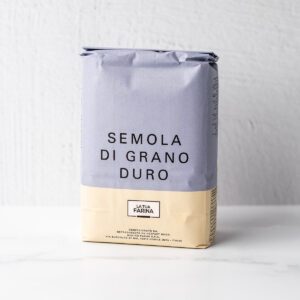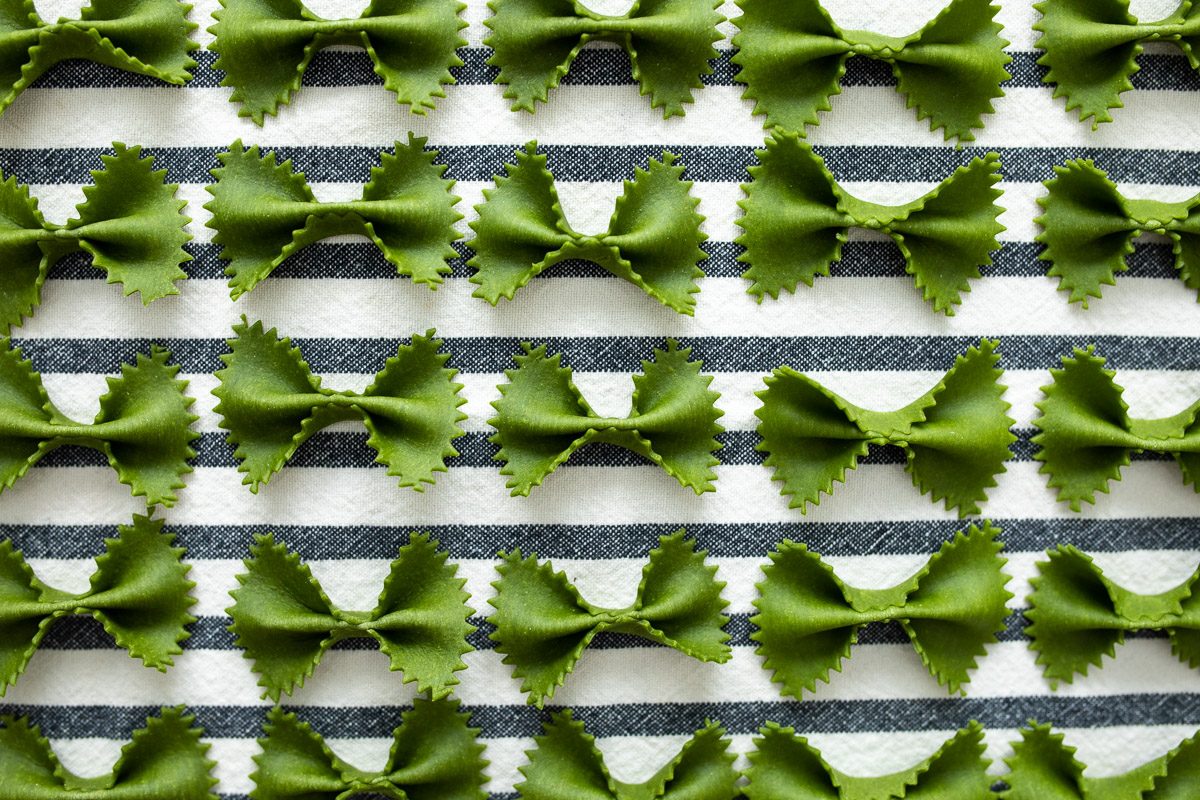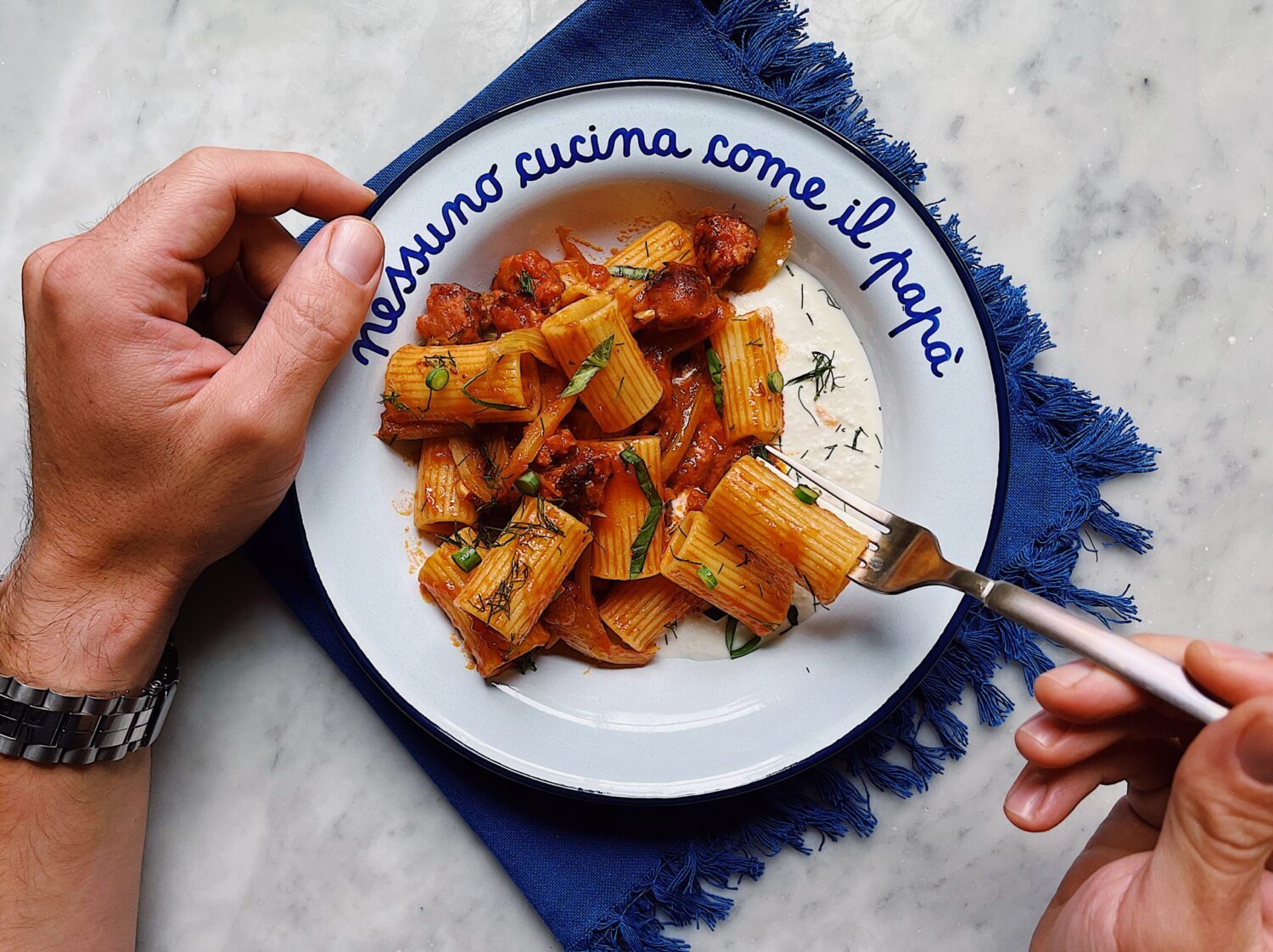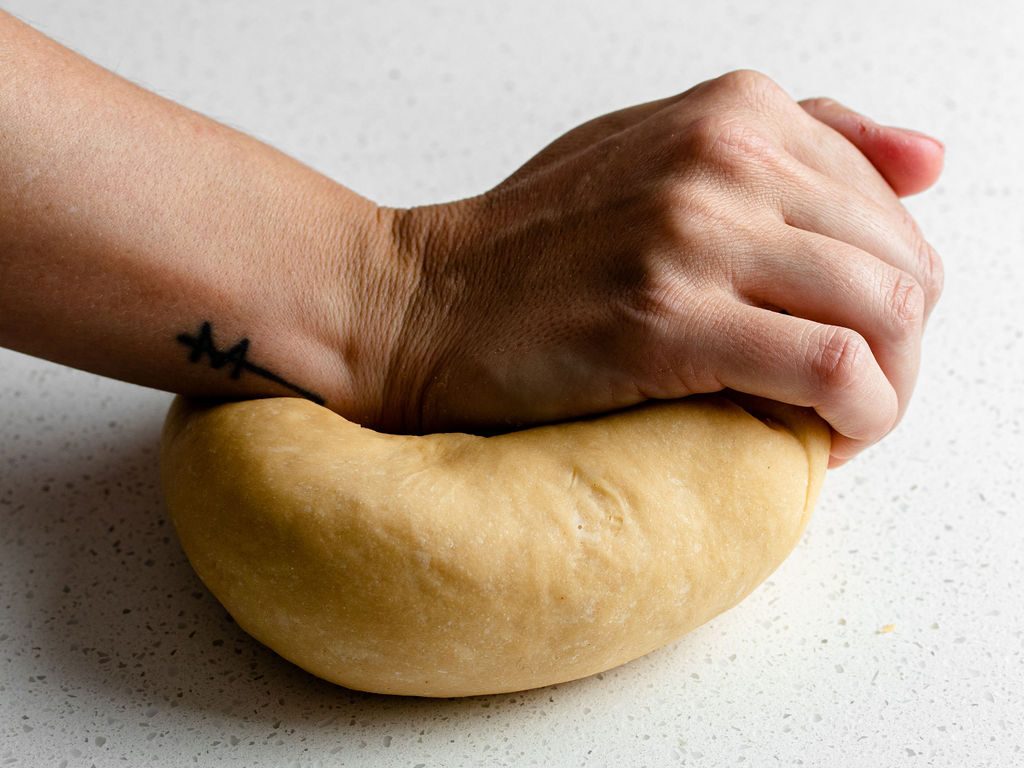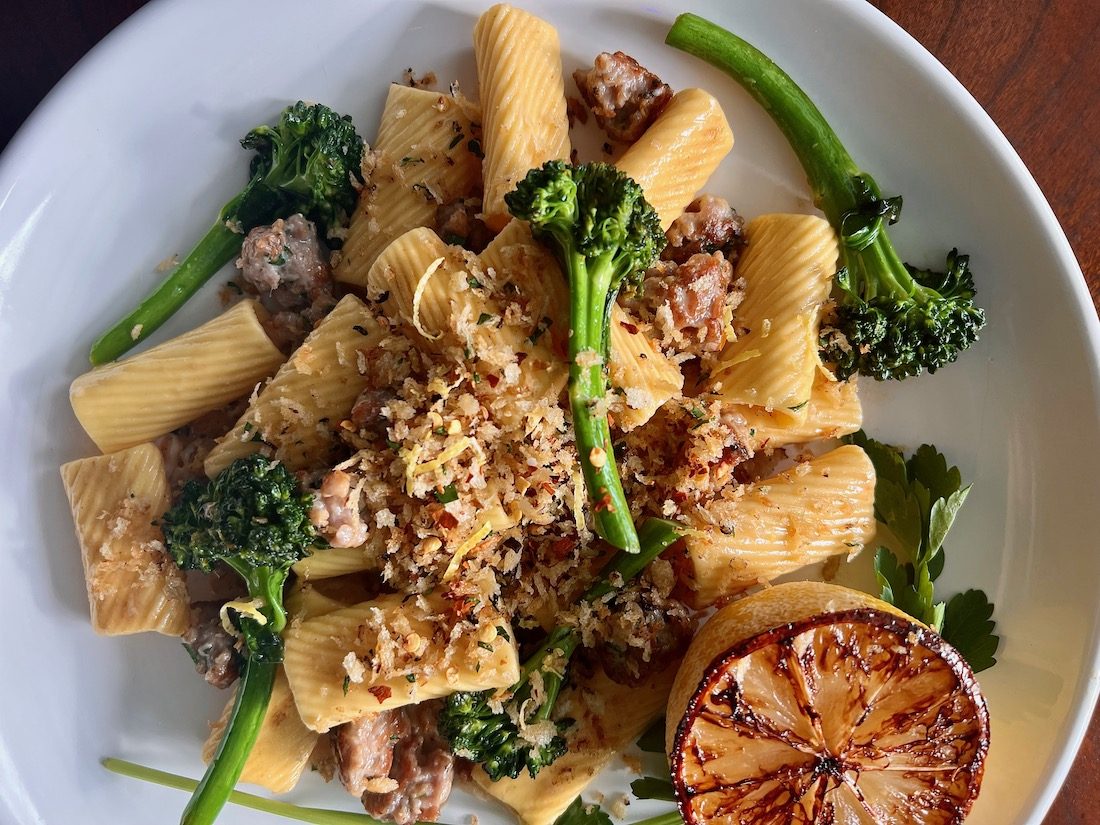
Scratch-Made Rigatoni with Lemon Parmesan Sausage and Broccolini
Recipe and photos by Jon Bennion (aka Intermediate Chef)
Stepping up your game in the kitchen requires a leap of faith into unknown territory. Yes, the risk of food failure is always a real possibility, but the payoff for pushing your skills to higher levels is worth the culinary gamble. For one, you know 100% what is going in your food – fresh, top-quality ingredients without any unwanted extras. Making things from scratch is a satisfying process taking something from start to finish and having a tastier outcome. Added bonus – you get to impress your family and friends.
If you are looking to explore new horizons in 2022, look no further than this fresh rigatoni pasta with homemade lemon parmesan sausage and broccolini. This dish is special for two reasons: 1) It offers a bright combination of unique flavors, and 2) it involves scratch-cooking the pasta and sausage.
You probably don’t hear the word “bright” to describe sausage, but in this instance, it’s appropriate. Lemon zest and white wine lift up the umami flavors of the parmesan while complementing the herbaceousness of the parsley. It’s not a sausage you’ll find in your grocery store, which leads me to the second special part of this recipe.
Making the sausage and pasta from scratch is next-level cooking. Homemade sausage doesn’t require special tools as long as you can get some quality, freshly ground pork from your local butcher. Try to find pork that has at least 20% fat – the bare minimum for sausage-making – to ensure the meat doesn’t dry out. This sausage does not get put into casings, so think of it more like you are making a meatloaf.
It’s hard to quibble about the glory of the cylindrical, ridged beauties that magically come ready to go out of a box until you make some on your own with a gnocchi board. The texture from the fresh pasta – rich, silky, and slightly more delicate – is what takes this dish into a satisfying stratosphere of savory splendor. If you wanted to try these flavors out with the boxed stuff first to get the sausage down and process mastered, I won’t judge. But homemade rigatoni needs to be on your 2022 culinary goal list.
The rest of the dish has several important cameo stars that tie it all together. Tender and green, broccolini is the perfect vegetable partner, providing contrast and a touch of color. Toasted breadcrumbs bring a necessary crunchy element, as well as a bit of heat thanks to the addition of red pepper flakes. The whole dish is lightly coated with a seared lemon, butter, and parmesan sauce that brings all the flavors into harmony.
Scratch-Made Rigatoni with Lemon Parmesan Sausage and Broccolini
4 servings
Prep time: 2 Hours
Cook time: 45 Minutes
Special Equipment
Ingredients
For the homemade rigatoni:
100 grams semola flour (also known as semolina rimacinata)
200 grams 00 flour
3 eggs and 1 egg yolk (about 165 grams, without the shells)
For the lemon parmesan sausage:
1 pound freshly ground pork, at least 20% fat
10 grams of kosher salt (a little less than 2 teaspoons)
¼ teaspoon black pepper
¼ teaspoon red pepper flakes
2 tablespoons freshly chopped parsley
1 ½ tablespoons coarsely grated parmesan
½ teaspoon freshly chopped garlic
Zest half of lemon
Optional: Splash of dry white wine
For the breadcrumbs:
2 tablespoons olive oil
½ cup panko breadcrumbs
pinch of red pepper flakes
pinch of salt
For the sauce:
3 stalks of broccolini, trimmed into florets
4 tablespoons butter
½ cup of freshly grated Parmigiano-Reggiano
1 whole lemon (use the one you zested)
Parsley, to garnish
Method
To make the rigatoni:
Dump the flour on a counter and create a well in the middle with the bottom of a bowl. Crack the eggs into the center. Mix together, first by breaking the yolks with a fork and then by bringing bits of flour to the center. As the mixture gets thicker, pull in greater amounts of flour and until you can use a fork or bench scraper to start cutting/smashing all of the flour into the wetter parts of the dough.
At this point, it’s time to get your (clean) hands dirty. Fold the dough onto itself just until it comes together to form a cohesive mass. Knead it for 10 minutes. This will be messy at first but it will start to smooth out after 6-7 minutes of kneading. Once the dough is smooth and uniform in color, wrap it in plastic wrap and let it rest for a minimum of 30 minutes. (If you are not rolling it out right away, store the dough in the fridge for up to 12 hours, bringing it up to room temperature before shaping.)
Divide the dough into quarters. Take one piece and run it through the thickest setting on your pasta machine, fold it back onto itself and run it back through again. Do this 10-12 times or more, which will help develop gluten and firm up the dough so the rigatoni are more likely to hold their shape. If the dough feels too sticky, dust with semola. Roll the sheet through to setting 5 on your pasta machine (about 1.4 mm thick).
Using a knife or pasta wheel, cut your rolled pasta sheet into 4.5 x 3.75 cm (1.75 x 1.5 in) rectangles. Take each rectangle and place it under a 1-cm thick wooden dowel, with the long edge parallel to the dowel. Roll the dowel and pasta across a ridged gnocchi board, making sure you get a good seal where the two ends of the rectangle come together.
Place your rolled rigatoni on a parchment-lined baking tray dusted with semola flour. Once they are all rolled, place the rigatoni in the refrigerator for two hours. This will help them dry out and hold their shape better.
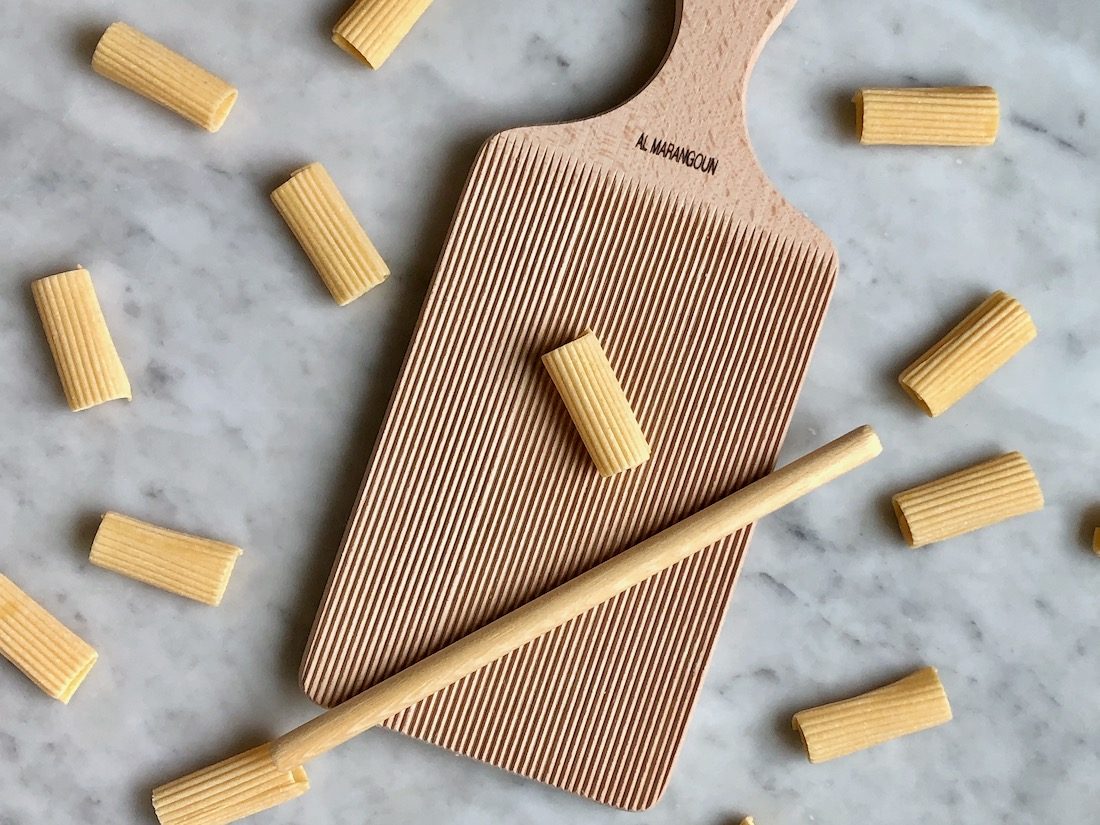
To make the lemon parmesan sausage:
Keep the pork cold while you gather and measure the seasoning, chop the garlic and parsley, zest the lemon, and grate the parmesan. Add all the sausage ingredients to a bowl and mix together with your hands until the seasoning is well-distributed throughout the pork.
Take a half-ounce of the sausage and form a small “test” patty. Sauté the patty on both sides over medium heat and taste for seasoning. This is the time to adjust for your tastebuds. Does it need more salt? Do you like more heat? Even more lemon zest? Adjust the seasonings accordingly, remix, and put into the refrigerator until ready to cook.
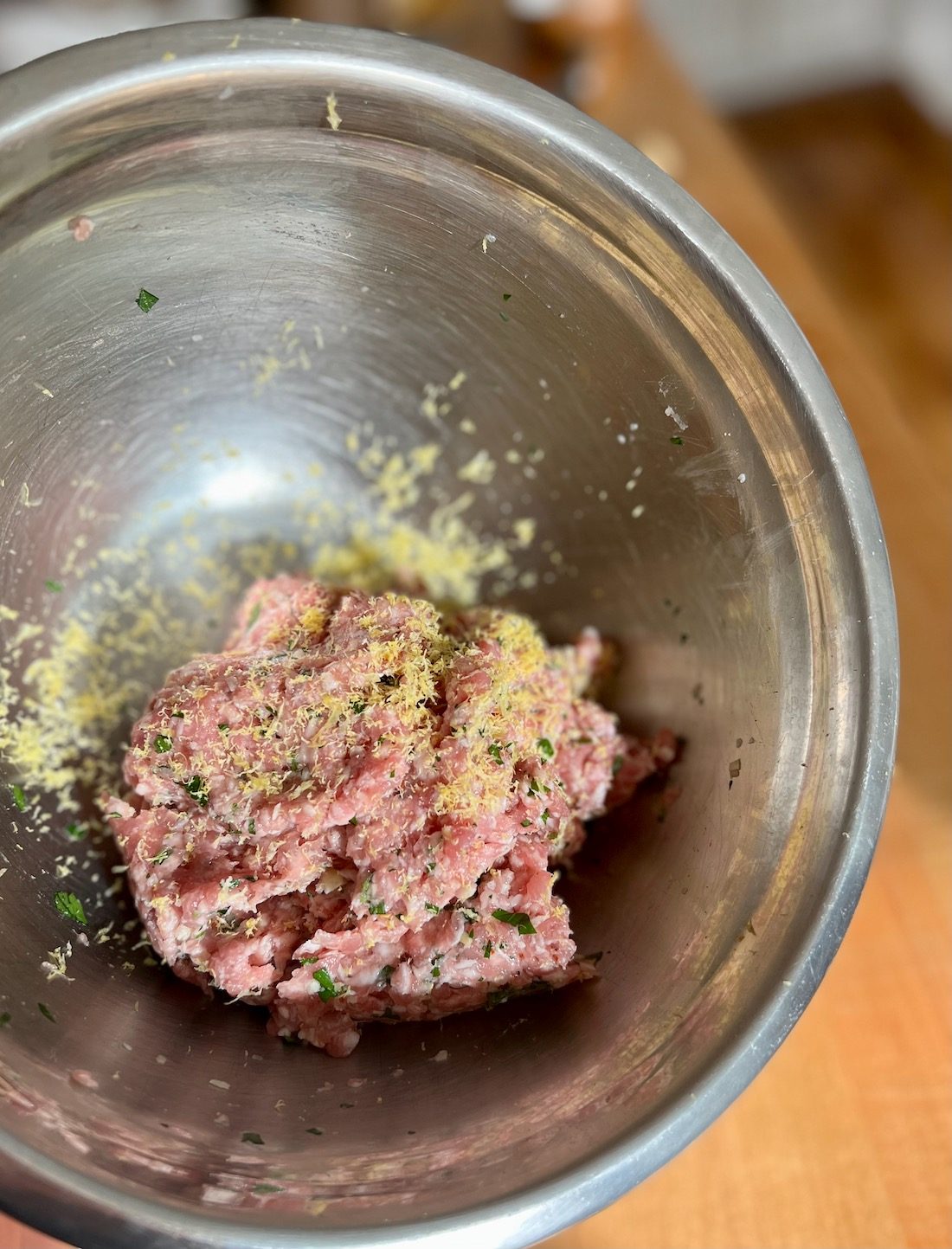
To make the breadcrumbs:
In a small sauté pan, combine 2 tablespoons of olive oil, panko breadcrumbs, red pepper flakes, and salt. Toast on medium heat, stirring occasionally, until golden brown. Set aside until plating.
To make the sauce & assemble the dish:
Slice the lemon in half and sauté in a pan on medium-low heat with a tiny amount of olive oil for about 7-8 minutes. This will caramelize the outside and reduce the harshness of the acidity. Juice one of the lemon halves and set aside.
Meanwhile, bring a large pot of water to a boil and generously salt it.
In a large sauté pan, break up the sausage into small clumps and sauté on high heat for a few minutes to start some browning. Add the broccolini and sauté for about three more minutes.
Gently add the rigatoni to the salted, boiling water and cook for about 3 minutes, or until the pasta is cooked all the way through.
While the pasta is cooking, melt the butter and place in a bowl with the parmesan cheese and juice of ½ of the caramelized lemons. Whisk together to emulsify. Add ½ cup of pasta water and whisk.
Add the cooked pasta and lemon-butter emulsion to the sauté pan with the sausage and broccolini. Turn down the heat to low and stir to coat and allow the sauce to reduce and adhere to the ingredients.
Divide among plates and top with the toasted breadcrumbs, chopped parsley, and shaved parmesan. For more lemon flavor, add a squeeze of lemon juice from the remaining caramelized lemon half before serving.
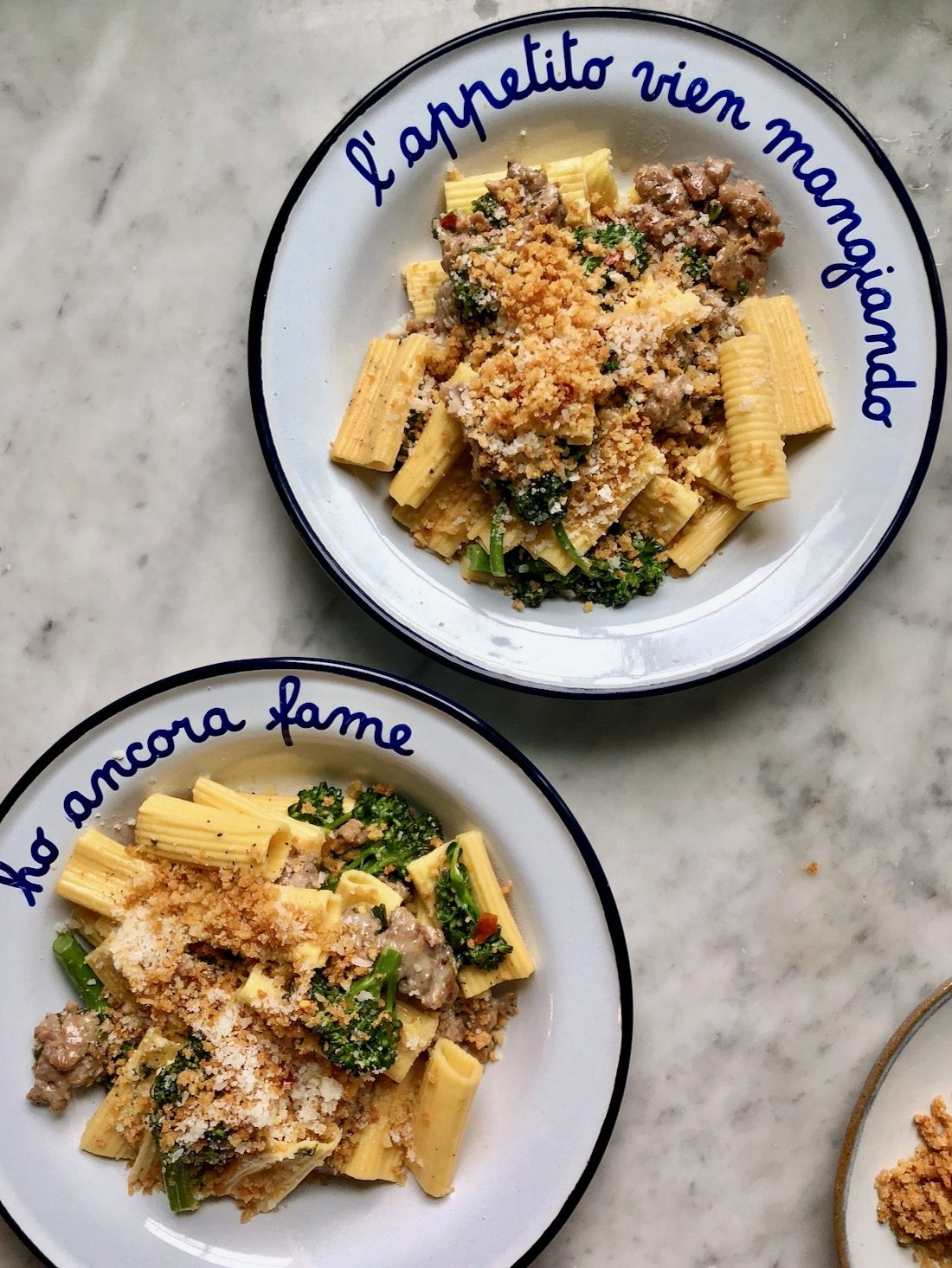

Jon Bennion is a recipe developer and food columnist. He posts on Instagram as @intermediatechef and lives in Clancy, MT.
Post a Comment
You must be logged in to post a comment.


